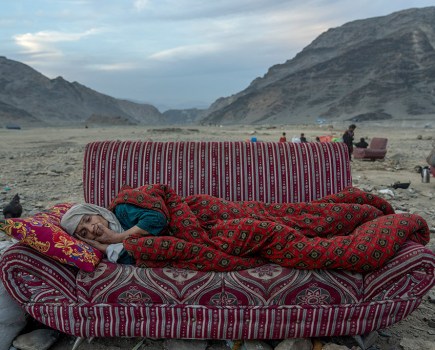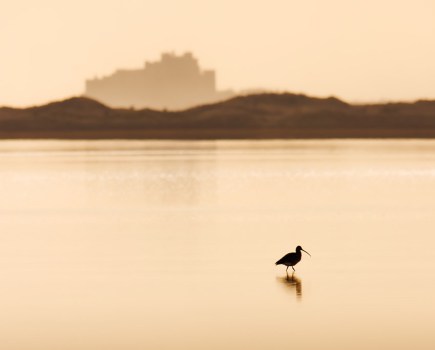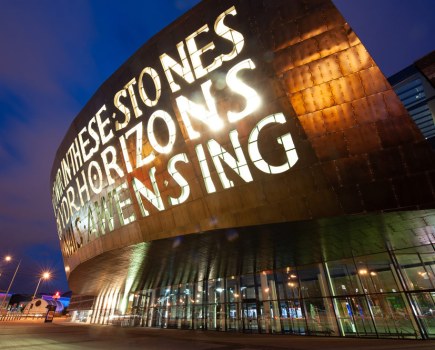Twenty years after the 9/11 tragedy, Amy Davies looks back at iconic images from the event, and some of the photographers share their stories
Marcy Borders by Stan Honda
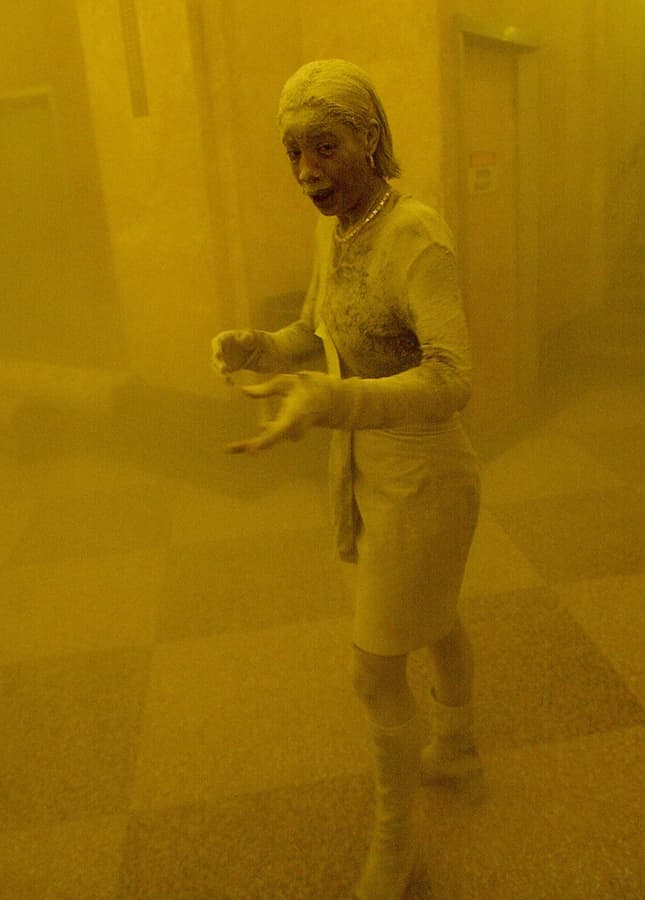
Freelance photographer Stan Honda had been contributing to the press agency AFP for five years at the time of the attacks. Living in Manhattan, he was able to get to the scene quickly to document what was going on. He describes that morning here:
‘One of the other AFP photographers called me and suggested I get downtown. I took the subway line from close to where I live down to the city hall exit. While I was in the subway, the second plane had crashed. So, when I got out, there were hundreds of people just standing looking at the Twin Towers.
There was smoke coming out of both of them, which confused me because I had only heard about the first crash. ‘We had no idea what was going on – this was in the days before smartphones. For AFP, I would cover lots of the business and Wall Street stories, so I knew my way around the area pretty well. I started to make my way towards the World Trade Center, and there were probably thousands of people running against the direction I was going in. It was probably the most chaotic day I’ve ever experienced.
‘Eventually I found some phones in a bank. We had cell phones, but the service had been out, so I managed to contact my boss here in New York, and also another colleague in Washington DC who filled me in. At one point I decided that the people were really the story. I tried to concentrate on getting pictures of people escaping, helping each other, trying to get out of the area and so on.
‘I was photographing the first tower when it started to collapse and there was this giant cloud of smoke and dust, and a noise like a train. I was photographing people as they were running out of that, and suddenly it became like night – you couldn’t see anything.
I was near a building with a lobby and there was a police officer pulling people in off the sidewalk for shelter. I went in there, and after about a minute, this woman walks in completely covered. ‘She sort of paused just for a second and I took that one frame and that was it.
‘At the time I didn’t think it was anything real special, but later, after I walked back to our office in Midtown – by then the public transport options were all closed – it was kind of striking to see it. It was kind of eerie, almost like something from Pompeii where the person is just white or grey. I think it resonated so well and got used so much because people can relate to the picture.
‘For news photos like this, we rarely find the identity of the person. A few months after September 11, her family called the AFP Washington office and identified her as the woman in the photo. The editors contacted me and a reporter in the New York city bureau, we were eager to find out who she was. We finally met Marcy at her Bayonne, NJ, apartment. It was a relief to see that she was physically fine.
We heard her story and I photographed her in a calmer setting. She worked for Bank of America on the 81st floor of one of the towers and managed to escape with other office workers. Unfortunately, she was still frightened of returning to lower Manhattan and was scared when hearing airplanes flying overhead. I lost touch with her and was sad to hear of her death from stomach cancer in August 2015.’
Raising the Flag at Ground Zero by Thomas E. Franklin
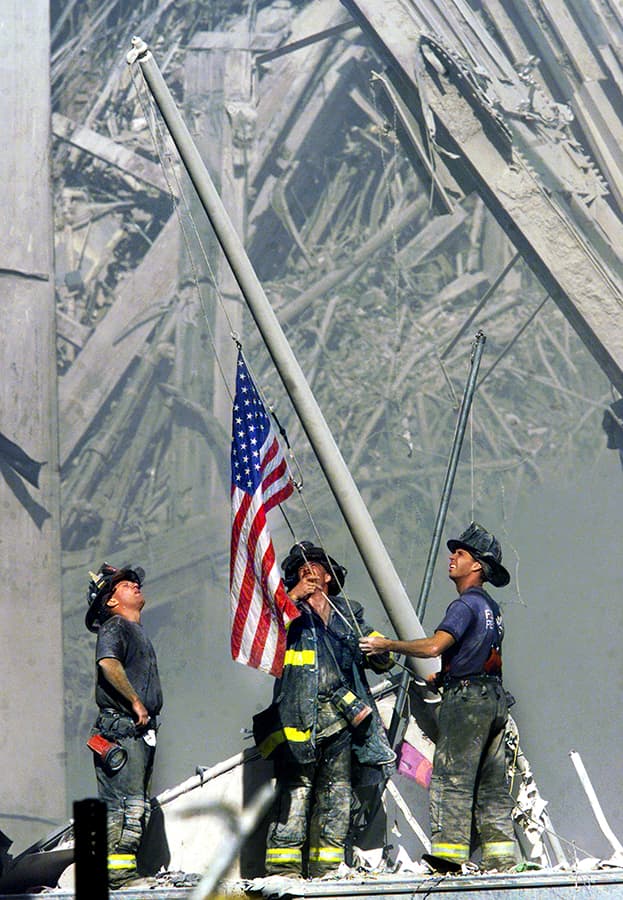
This is perhaps one of the most famous photographs to come from the events of September 11. Hugely recognisable, it was used as the front page of The Record the following day, on 12 September, 2001. It was also put out on the Associated Press wire, used in newspapers and publications around the world.
One of the reasons why the photograph became so famous is that it was compared to the ‘Raising the Flag on Iwo Jima’ photograph, captured during World War Two by Joe Rosenthal. Franklin’s photo shows firefighters from Brooklyn (George Johnson, Dan McWilliams and Billy Eisengrein) erecting a flag cut from a yacht docked in the yacht basin in the Hudson River at the World Financial Center.
The photograph was taken from a distance using a telephoto lens, at around 5pm – less than eight hours after the towers had collapsed. Franklin stated that he was about 150 feet away from the firefighters, with the debris seen in the background about 90 feet behind them again. To get to the location, Franklin had hitched a ride on a tug boat across the Hudson River, arriving at the scene after both towers had collapsed.
When he saw the firefighters, he was with the famous war photographer James Nachtwey, who also went on to produce a body of work relating to the attacks. Speaking to Politico about the picture, Franklin said, ‘This picture did not stand out to me. The three men raising a flag paled in comparison to thousands of people dying and two buildings falling to the ground. I can’t even say this is the best picture I ever took – but it is the picture with the most meaning.’
As well as being used in a variety of publications both at the time of the attacks and in the 20 years since, the photograph has had a lasting legacy in other forms. It was used for a ‘Heroes 2001’ stamp by the US postal service, and there has been at least one statue commissioned replicating the shot. The actual flag itself went missing shortly after being raised, but it was recovered several years later.
The photograph is now a part of the permanent collection of the Library of Congress, and it has received dozens of other awards. In 2002, Franklin was a finalist for the Pulitzer Prize for his photographs from September 11, including this shot. It was also included in Life magazine’s list of 100 Photographs That Changed the World. It was used to raise money for charity on several occasions, with a 2002 autographed original print selling for almost $90,000 at Christie’s Auction House, with the proceeds being donated to two 9/11 charities.
World Trade Center Attack by Mario Tama
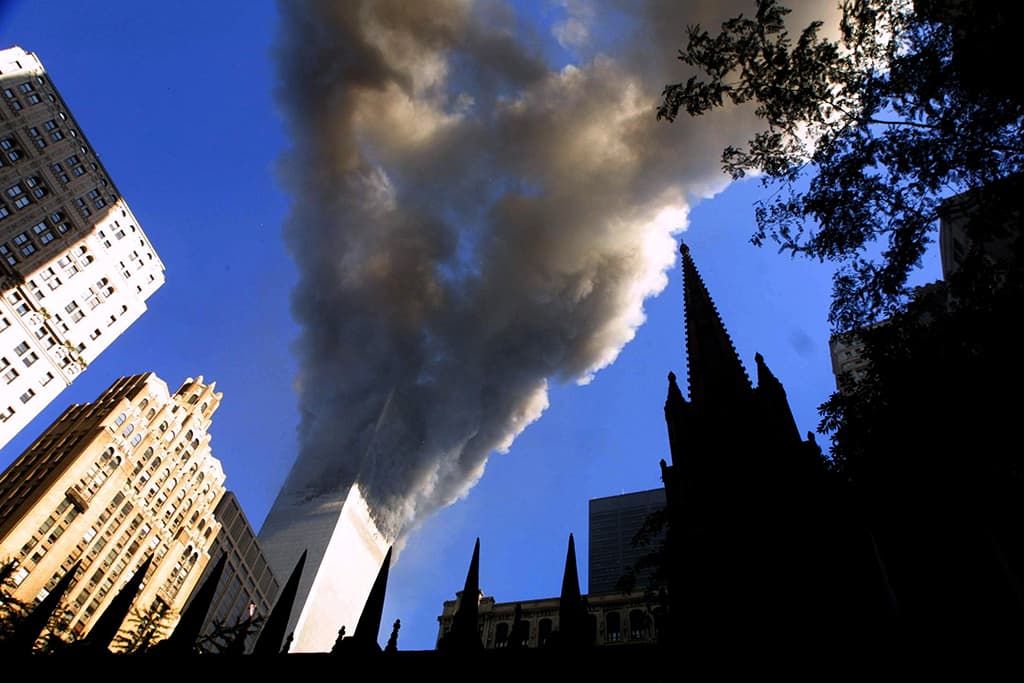
New York-based photojournalist Mario Tama was one of the first photographers on the scene. He describes the panicked situation on that fateful morning.
‘I was at home in my apartment in the Lower East Side, when my editor called me in a very frantic voice to tell me that a plane had hit the World Trade Center and I needed to get to Lower Manhattan. So, I grabbed my gear and quickly headed out the door. When I got to the corner of Chrystie and Delancey [streets], I was able to see the Twin Towers and the big jagged hole in the North Tower, where the first plane had struck. I remember thinking to myself, “This is war.” I tried to hail a few cabs near that corner but had no luck, so I ran down from there to the scene.
‘That morning, before the towers collapsed, was managed chaos. I remember seeing people heading out away from the buildings towards me as I made my way there, some in shock, some bleeding, nearly everyone trying to somehow get home. As I got closer to the perimeter of the towers, I encountered more and more photographers and members of the media, and many of us were trying to get under or even into the towers.

Something that we are often taught in photojournalism school is the famous Robert Capa line, “If your pictures aren’t good enough, you aren’t close enough”. The police kept us a bit away from the scene and probably saved a lot of photographers’ lives that day, including mine.
‘I tried to make my way around the police barricades and walked around Trinity Church to head up Greenwich toward the South Tower – when I heard a sharp sound, looked up, and saw the South Tower begin to collapse above me.
At that moment I was transformed from a photojournalist into just another New Yorker running for their life as the tower collapsed. I made it a couple blocks before the tornado cloud of dust subsumed myself and two other men, at the edge of a parking garage. Daylight turned to night and quickly into a blackout where it felt like the world had stopped. Manhattan had disappeared. One or two of the men said prayers. Somehow, after a while, the dust began to settle and a bit of light started to filter through. We were alive.
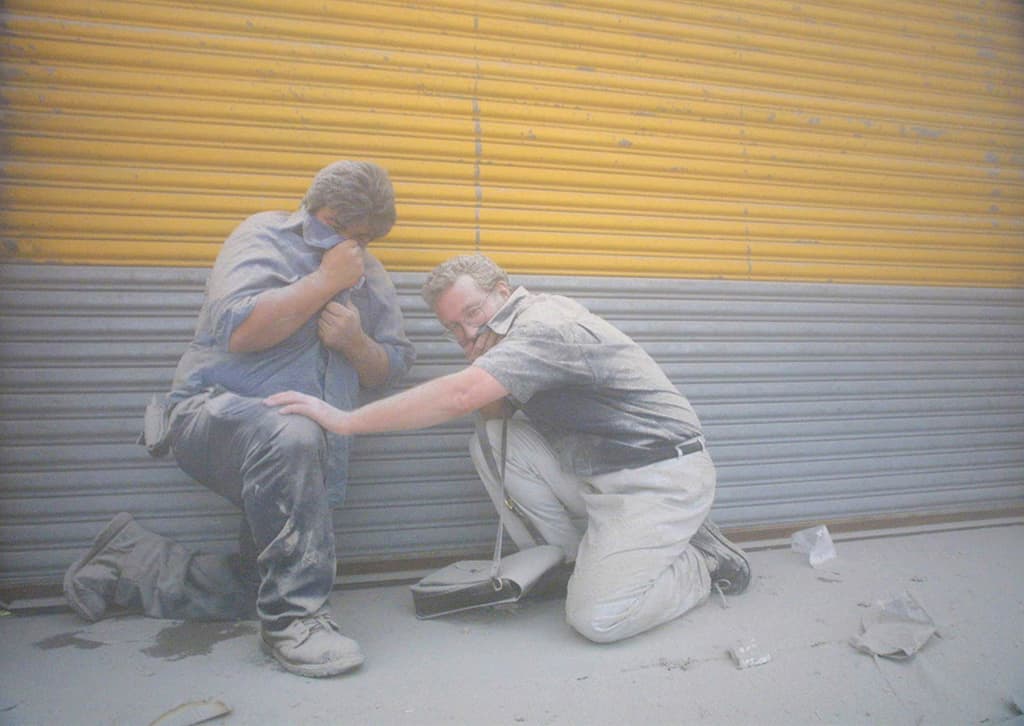
‘I remembered telling myself that I had been thrust into history and I needed to document it, that was my job; I told myself, over and over, “just do your job”. The camera was a shield that day. I had a pretty new digital set-up of Canon 35mm cameras, I think it was the D30 – which was 3.1 million pixels.
Having digital was hugely advantageous because I was able to walk from Ground Zero back to our office, on Varick and Canal [street], and drop off my cards to our picture desk, who were able to get those images out quickly to the world. Our picture desk team were amazing that day – they could have left and gone home but they stayed and sent our pictures out.
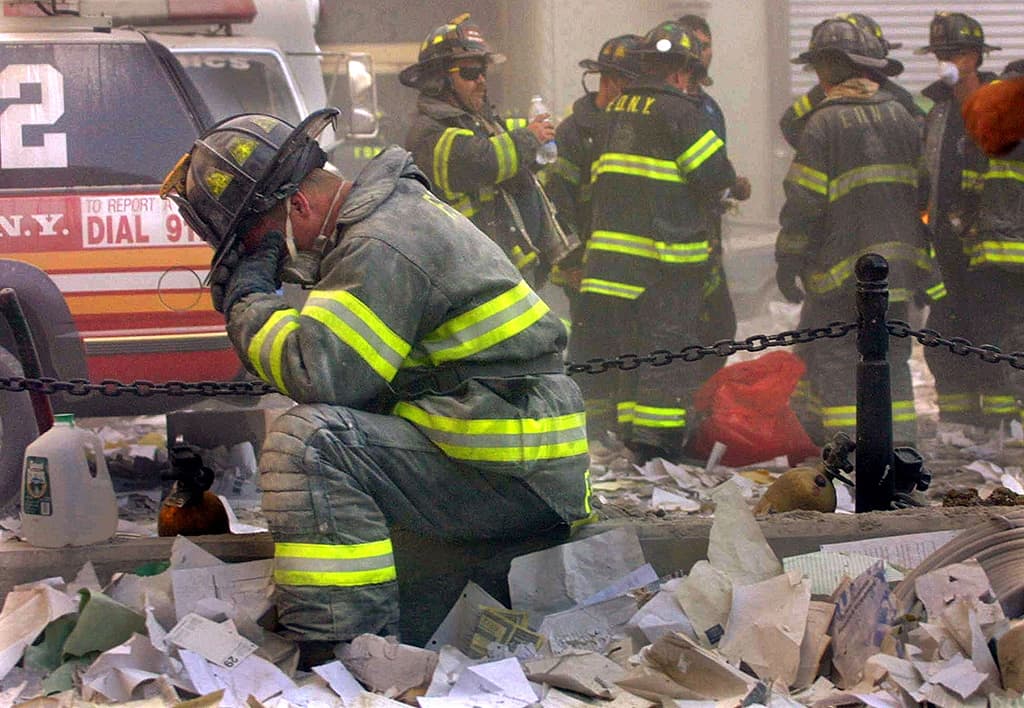
‘I haven’t really looked through the images yet for this anniversary, but I usually do a few days ahead of time. I’m sure I will. I’m just not ready yet. It takes a bit of mental preparation. In some ways, the emotions can become raw again when I go through the images. I’m not surprised we are still talking about it, it was a moment in our history that should never be forgotten. I hope the photos speak to that.’
Manhattan From Ferry by Tom Stoddart

We have featured much of the work of Tom Stoddart over the years here in AP. His image above was taken almost a week after the attacks, when the Staten Island Ferry reopened for the first time. He describes what it was like in the days following September 11:
‘I was in London when the attacks actually happened, so it took days and days to get there. Everyone was saying “don’t go, there’s no point”, but it was just something I had to do. I think if memory serves me right, I had to get there via Niagara Falls because all of the air space was closed over New York.
‘Like all the rest of the photographers, I was spending lots of time just walking around trying to make sense of this event. For about a week, I was just literally walking around seeing what I could get, photographing all kinds of things. Since this was the first time the ferry was open, I expected there to be lots of photographers on it, so I was very surprised when there was only myself and one other guy.
‘It’s a picture I really like. The people in the photograph were able to resume their commute, but they’re faced with a scene that is changed from the one they’ve seen for years. It was absolutely silent as the ferry moved towards Manhattan, and there was still lots of smoke and dust in the air. Everyone was very, very still. Some people were praying.
‘Whenever I look at the picture, it brings back a lot of memories for me. I remember how quiet it was, and the enormity of it. People were looking at this space where the Twin Towers used to be and realised that their daily commute would never be the same again.
‘I’m not really sure how the picture was used at the time – if at all – but it didn’t matter. Other photographers had already done a lot, I wasn’t expecting to get lots of publications publishing my stuff, but it was just something I had to do. I was shooting film too, there was no rush to develop it because there were wall-to-wall photographers. I’m sure those who were in New York at the time of the attacks had a different experience from those of us who arrived later chasing the story.
‘I think I only shot maybe two pictures in the entire time I was there – about two weeks – that I thought were worthwhile. My feeling was – and is – that if you go and get even just one picture that you appreciate or that you like in terms of the event, it’s worthwhile, so I was happy to get the picture.’
Further reading





